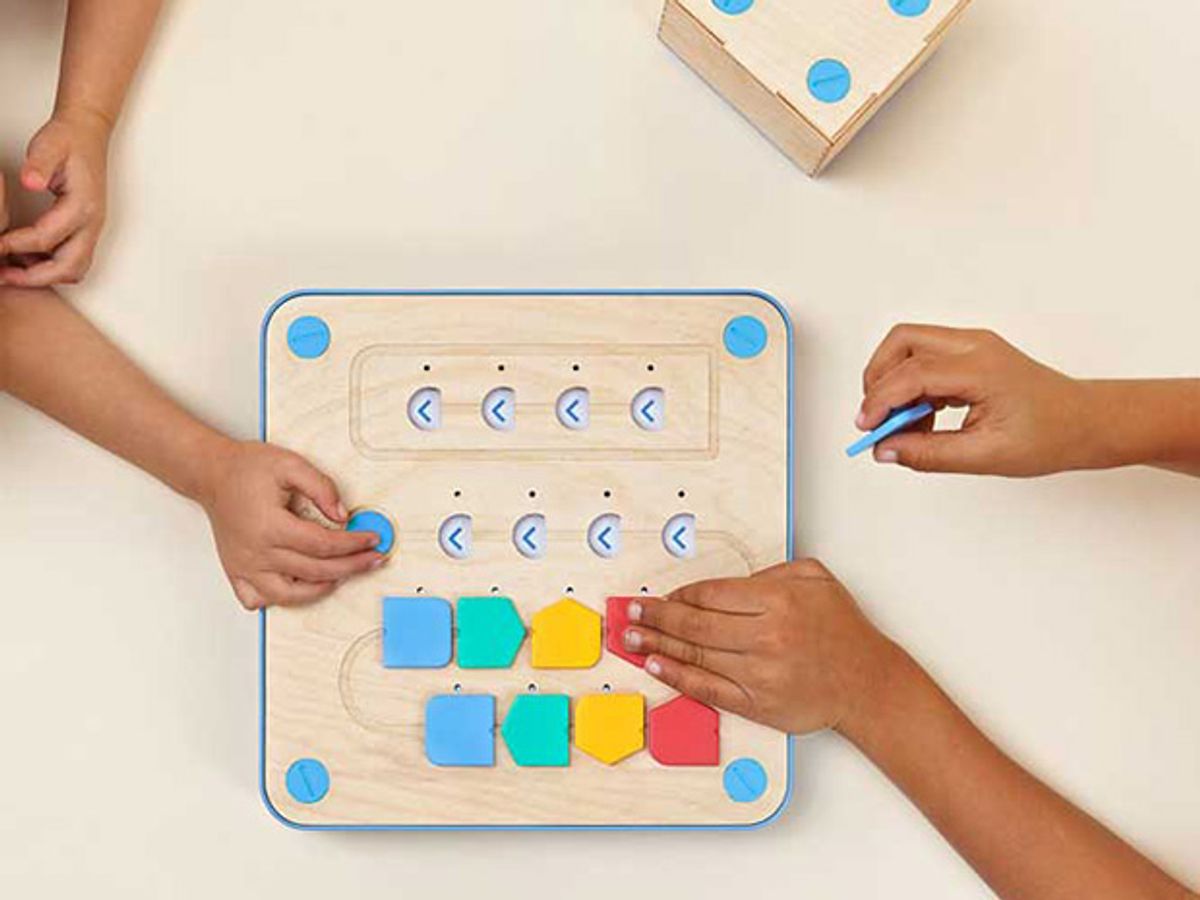One of my favorite toys when my children were toddlers was the classic shape sorter. If you’ve had kids, you likely know what I mean: a box or canister with cutouts that fit different shaped blocks. The most basic versions have holes that will accommodate a cylinder, a cube, and a pyramid; others get more complex. I spent many happy hours sitting on the floor with my kids as they discovered the thrill of finding the right hole for each shaped block. It was always sad when this toy was outgrown.
So I fell instantly in love with Cubetto from startup Primo. Cubetto, a play set intended to teach basic programming literacy to three-year-olds, was unveiled at Highway1 accelerator’s biannual launch event held last week in San Francisco. I’m not sure if kids that young really need to learn programming—there’s been a fair amount of debate lately about how early to begin pushing STEM education, particularly in Silicon Valley.
My main objection to pushing STEM down to the diaper set is that it all seems to involve screen-based learning tools, and I am sure that little ones don’t need more screen time. The Cubetto play set takes the screen out of the equation. Says Primo CEO Filippo Yacob: “Programmable toys [today] all function as an extension of tablets and smartphones; the programming only happens on the screen. That may be great for 7-year-olds, but it’s not for 3-year-olds.”
Here’s what else I like about Cubetto:
- The basic play board has brightly shaped objects that plug satisfyingly into slots to make pleasing patterns. That’s pretty cool itself.
- The play map and toy objects that go on it have that Brio toy train set feel to them. Brio and wooden train sets like it have been rocking the toy world since at least the 1950s.
- The whole thing encourages experimentation. Move the blocks around; push the button; then what happens? Use only red blocks; then what happens? No instructions are necessary for preschoolers—or their parents.
- Cubetto rhymes with Geppetto. Enough said.
Yacob believes that programming is a basic literacy skill that should be introduced in preschool, and thinks his toy intuitively teaches basic programming concepts including algorithms and loops. Maybe. But that’s not why I’d get down on the floor and join a three-year-old in playing with it. I’d be motivated by the fact that it just looks like we’d both have fun.

Yacob has been hand-building the gizmos, with funds from a Kickstarter campaign in 2013, and has shipped 800 of them. He plans mass market launches in the U.S. and U.K. early next year. The $179 retail price gets you the programming board, 16 programming blocks, a robot, the play world mat, and a few objects like trees and houses to populate the play world. More from Yacob in the video above.
Tekla S. Perry is a former IEEE Spectrum editor. Based in Palo Alto, Calif., she's been covering the people, companies, and technology that make Silicon Valley a special place for more than 40 years. An IEEE member, she holds a bachelor's degree in journalism from Michigan State University.



